How Hoof Boots Work in the Snow
This week we had our first snow of the season. It wasn’t a blizzard. We only got about five inches of snow. Still, it was fun taking Cracker and Pie for a spin in the white stuff. If you’ve ever wondered how hoof boots work in the snow, this post will interest you.
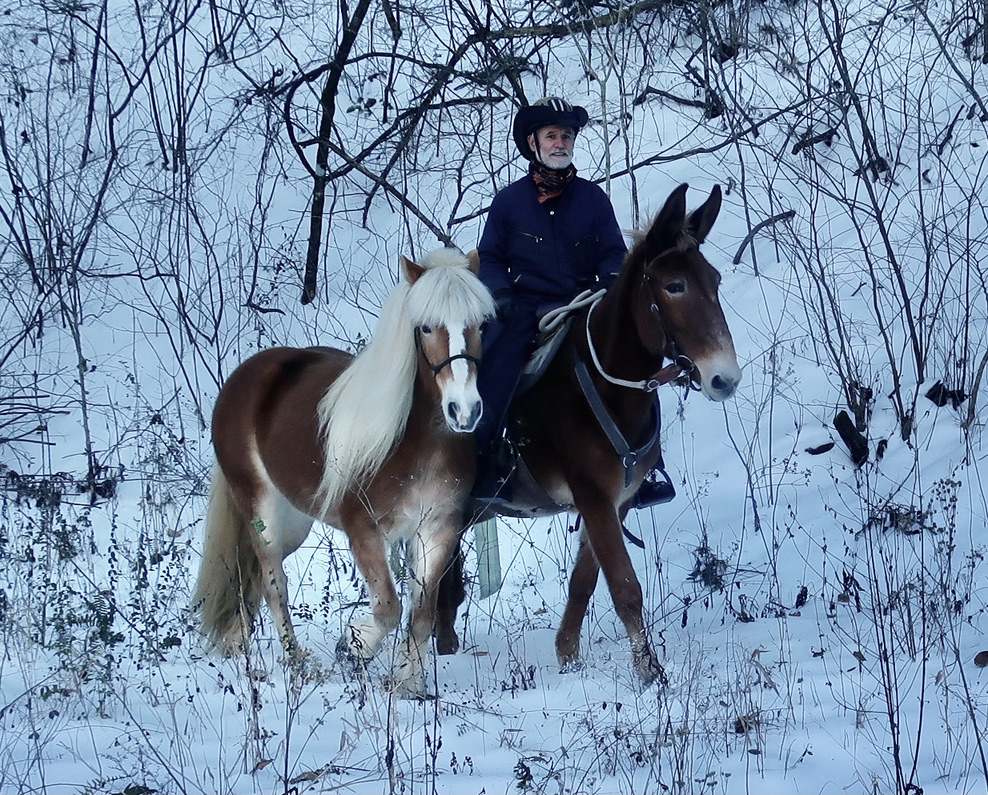
About Hoof Boots and Me
None of my wife Julia’s or my horses or mules wear steel shoes. We ride them all barefoot. When they need a bit of extra protection, we slap on a set of hoof boots. In the past fifteen years, I’ve made the following trips in hoof boots:
- Atlantic to Pacific Ocean saddle trip (13 months – 2,500 miles)
- Canada to Mexico wagon trip (14 months – 2,400 miles)
- Across Newfoundland (5 months – 1,000 miles)
- North Carolina to Idaho (6 months – 2,200 miles)
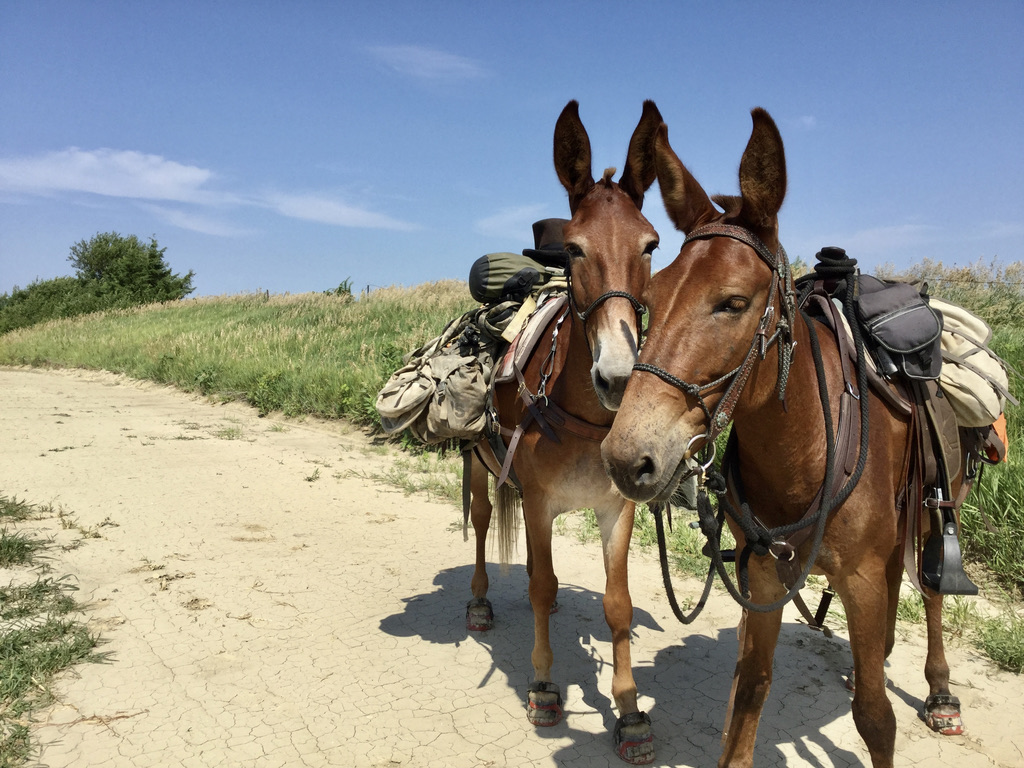
For the most part, hoof boots work great. I’ve used them in all sorts of conditions, from mud, rocks and rain, to pavement, lava and snow. Snow can be a challenge, though, so I thought you’d be interested in how they worked out on my recent outing.
The Trouble With Riding in Snow
The trouble with riding a horse or mule in the snow is that it can collect as big snowballs on the bottom of a horse’s feet (when I refer to “horse”, I also mean mule). This can be especially trying in wet snow. Some people have had luck smearing the bottom of the hoof with something like petroleum jelly so the snowballs drop off. I never had luck with that approach. The only thing that has worked consistently for me are hoof boots.
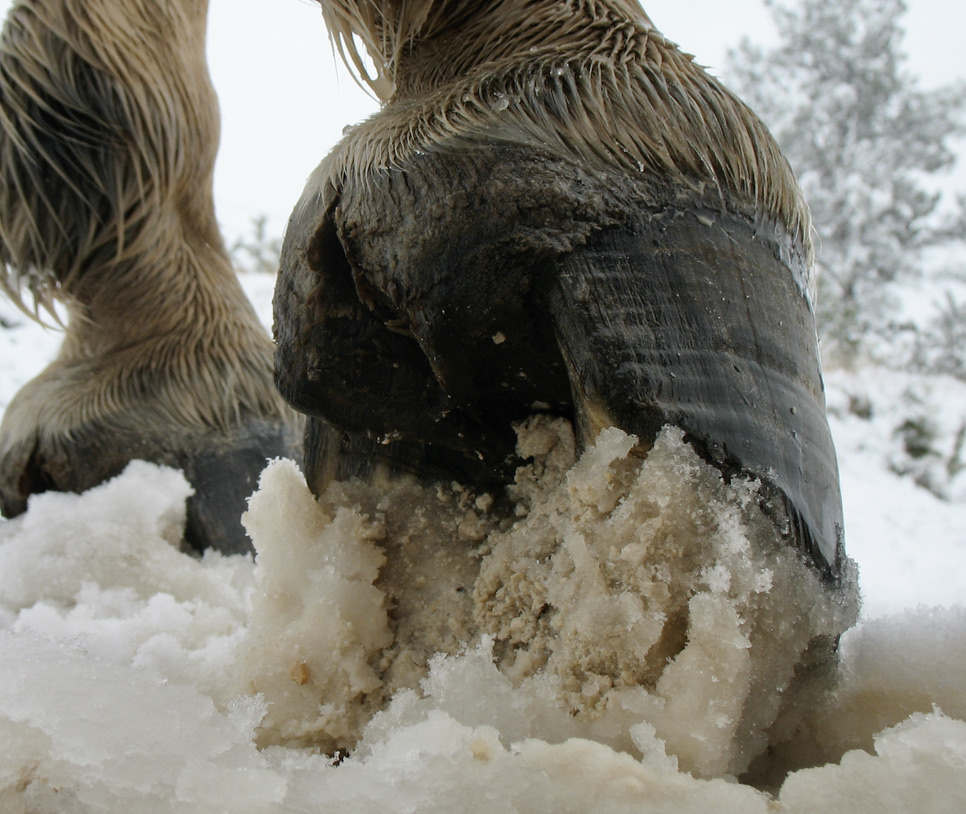
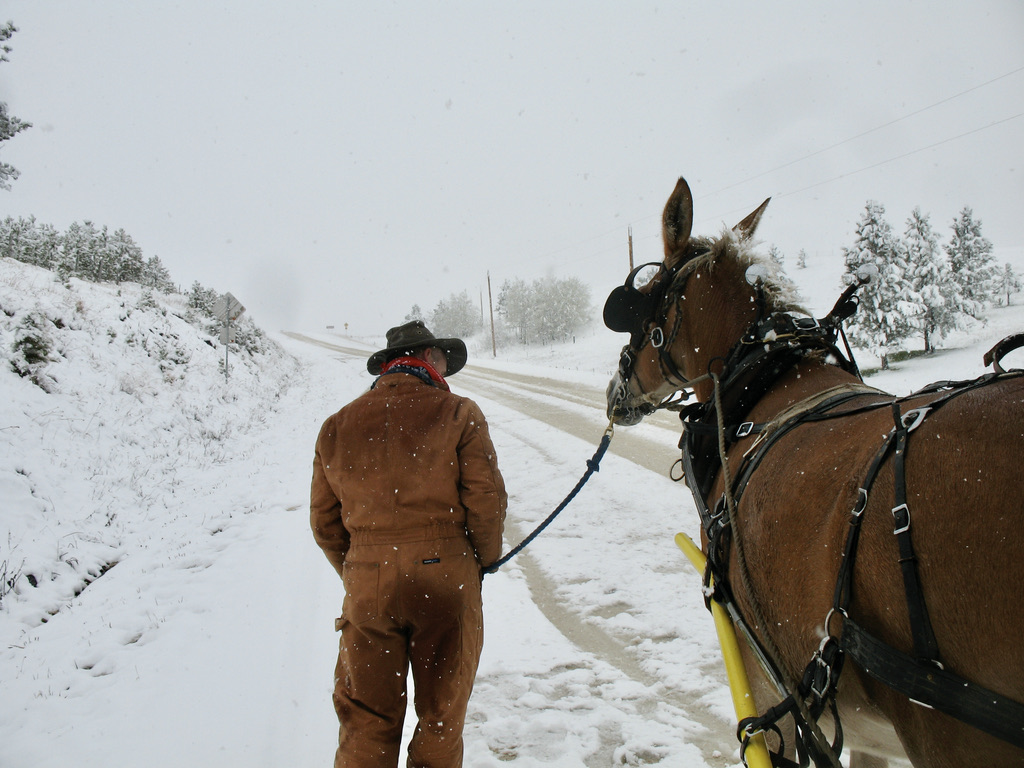
The hoof boots keep the snow from packing into the bottom of the animal’s feet.
Heading out With Pie and Cracker
Here are some photos of my ride in the snow with Pie and Cracker.
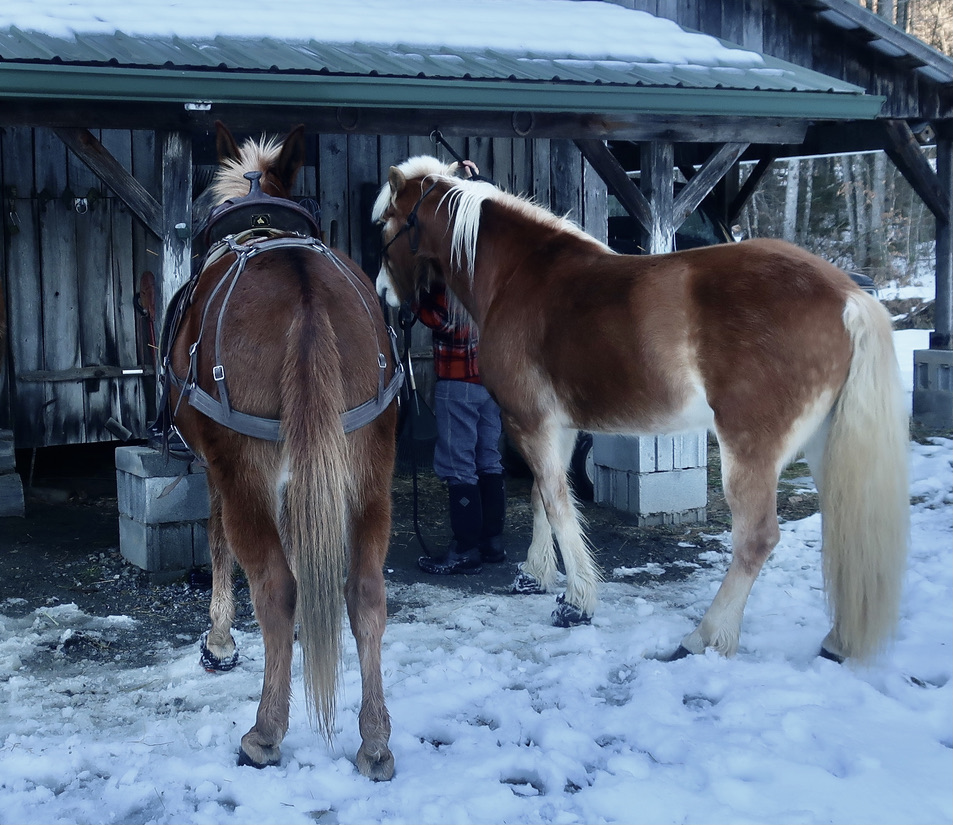
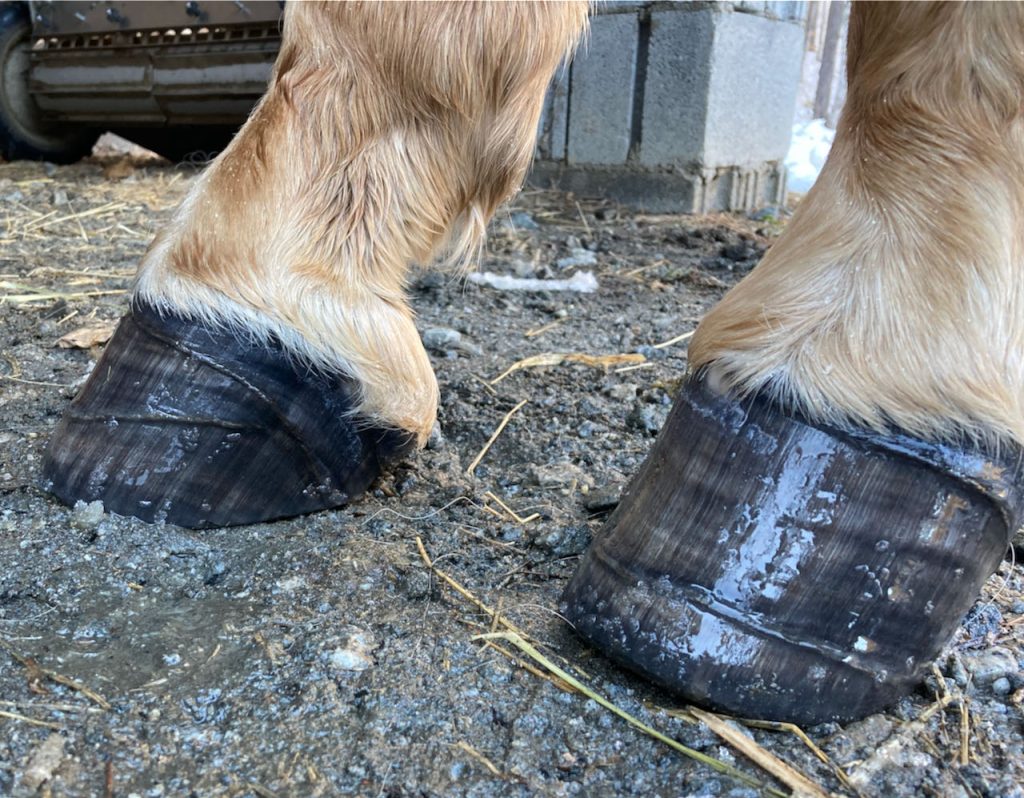
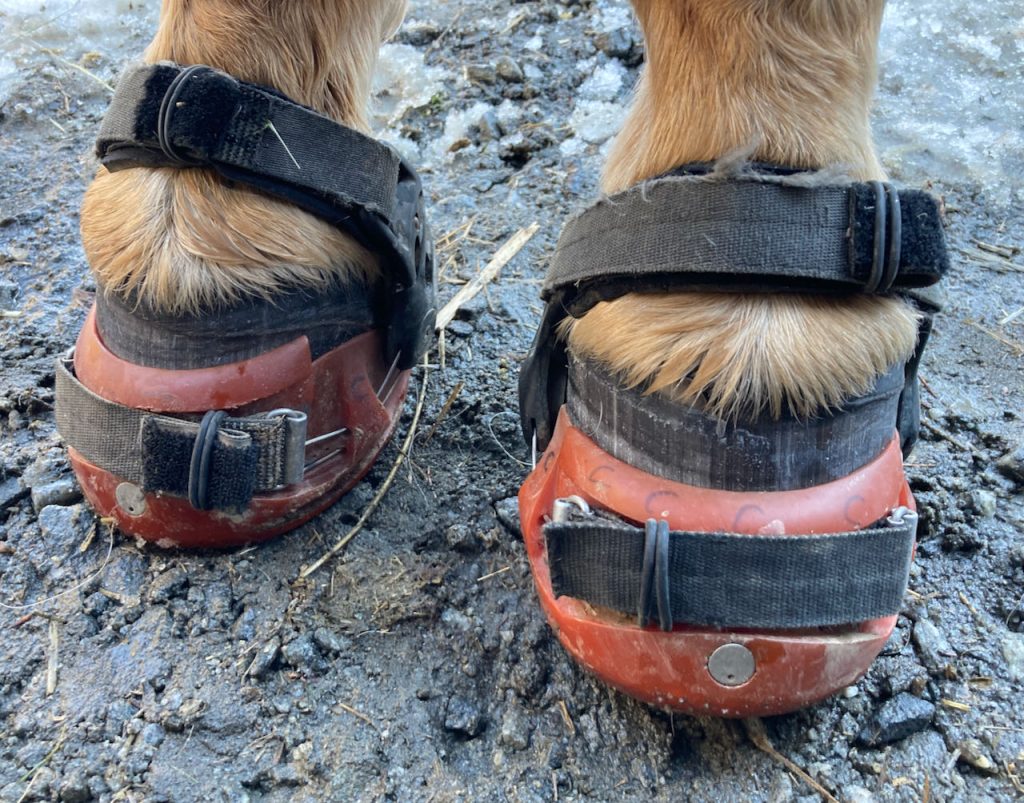
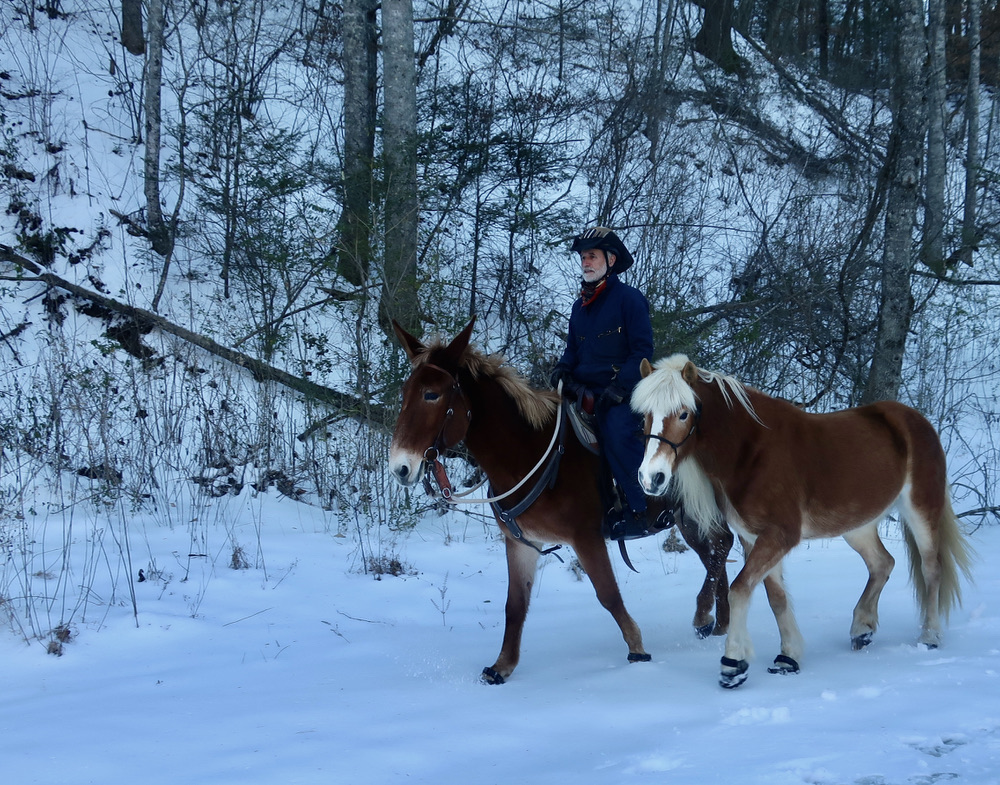
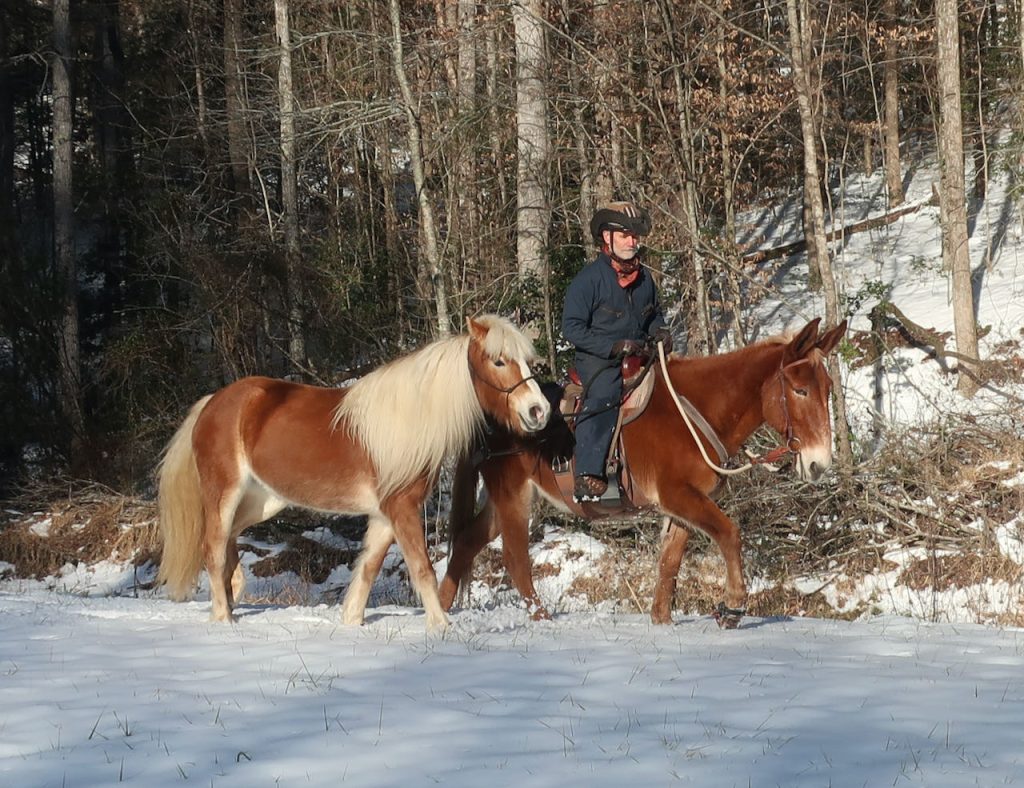
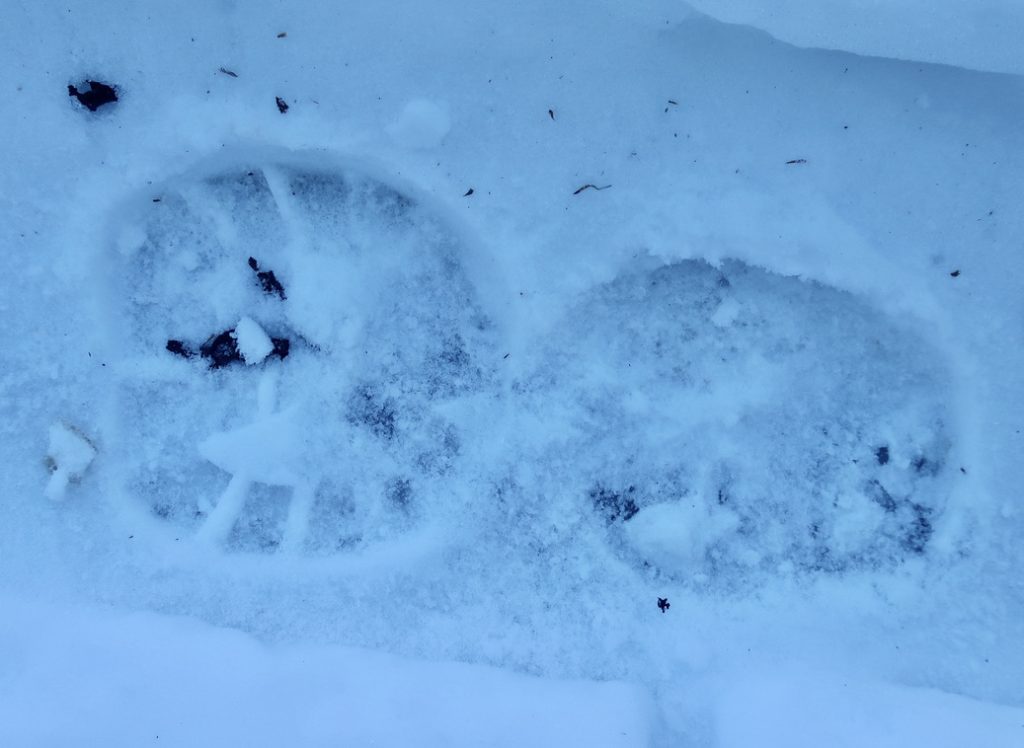
How it Went: The Pros and Cons of Hoof Boots in the Snow
Over the years, I’ve put in a lot of miles with hoof boots in the snow, from crossing the Rocky Mountains in winter to traveling through Idaho in the snow. Most of my experience has been with Easy Boots and Renegades. For the most part, they work great.
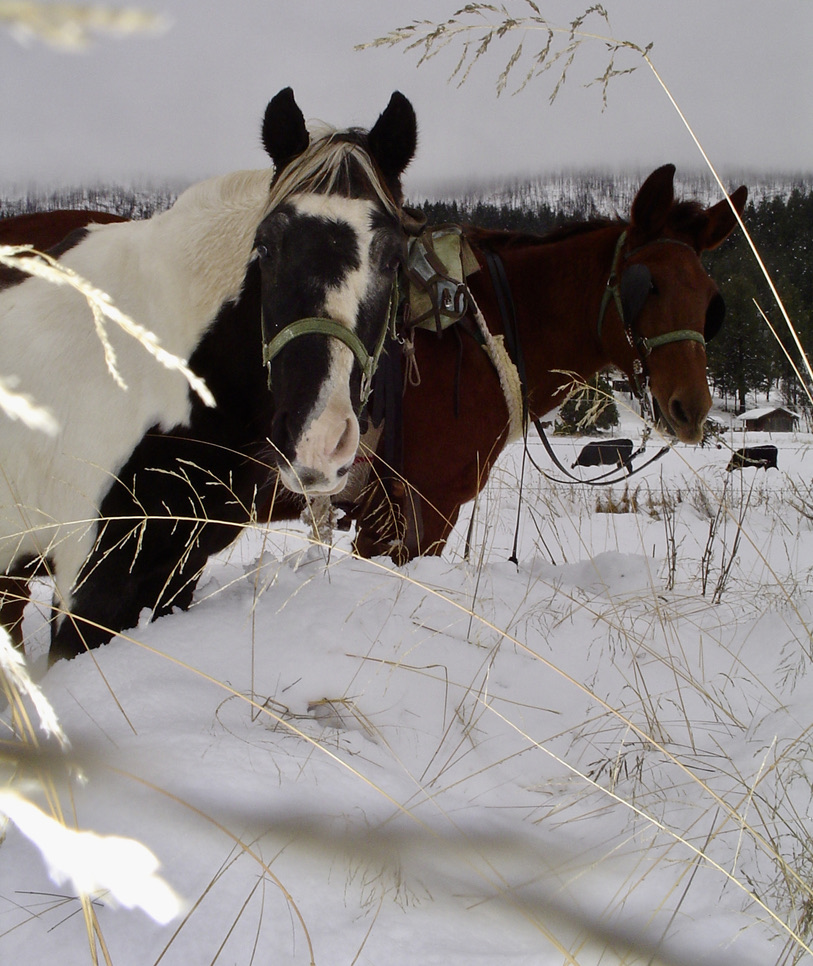
The biggest issue I’ve had with using hoof boots in the snow is that the snow can clog the hooks and loops in the Velcro it doesn’t attach to itself.
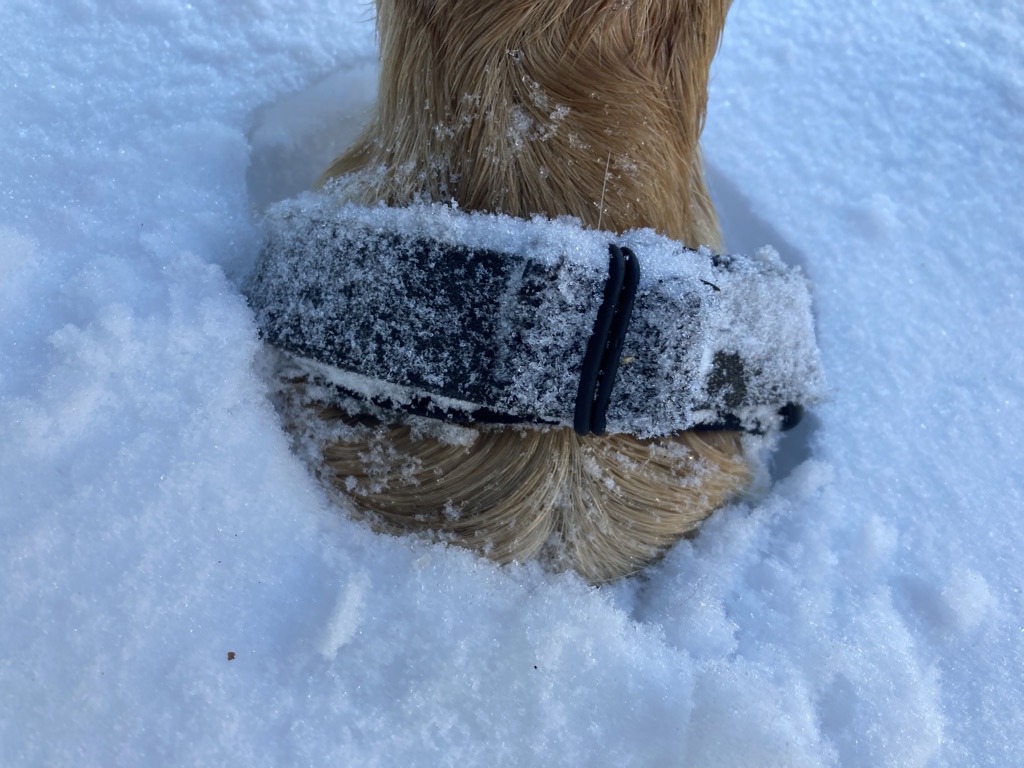
The other issue is cold fingers. It’s hard to adjust hoof boots straps with your gloves on so you need to take them off for any serious adjustments.
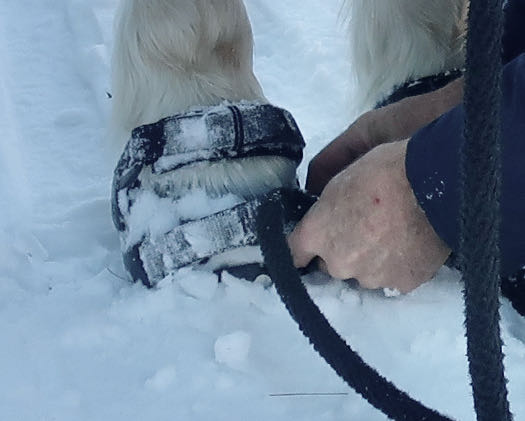
As bad luck would have it, not too long into my ride, the rubber O-rings that hold the extra Velcro on the toe strap of Pie’s hoof boot broke. This had nothing to do with the snow. The O-rings were just worn out. It takes about thirty seconds to replace them so it’s no big deal.
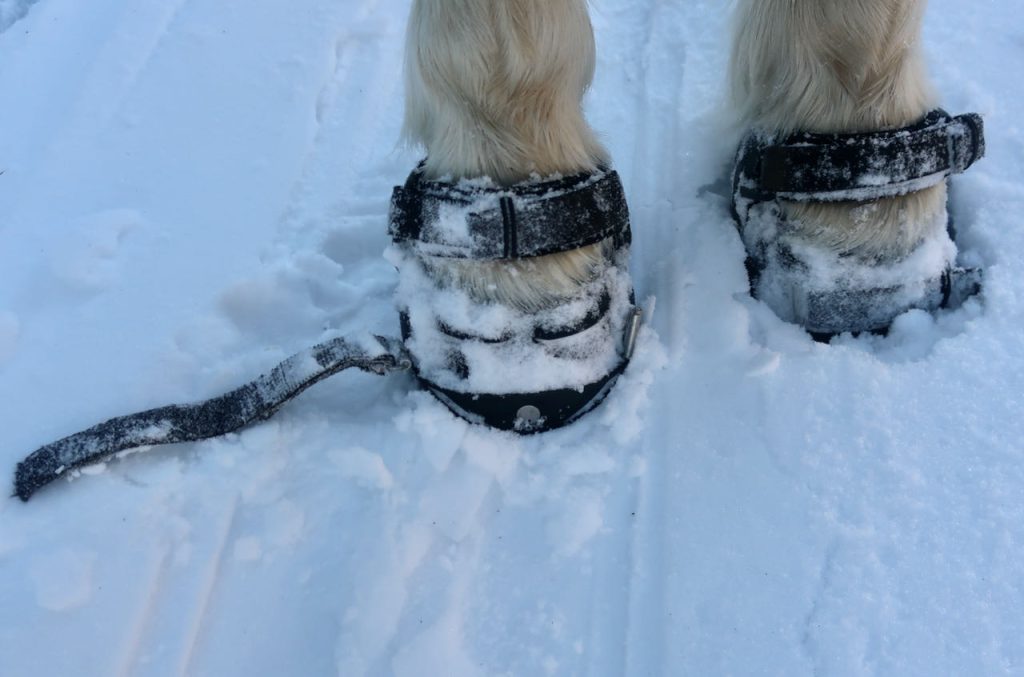
As good luck would have it, the hoof boot stayed on just fine. I just tucked the toe strap up under the pastern strap, the strap above it, and just kept riding.
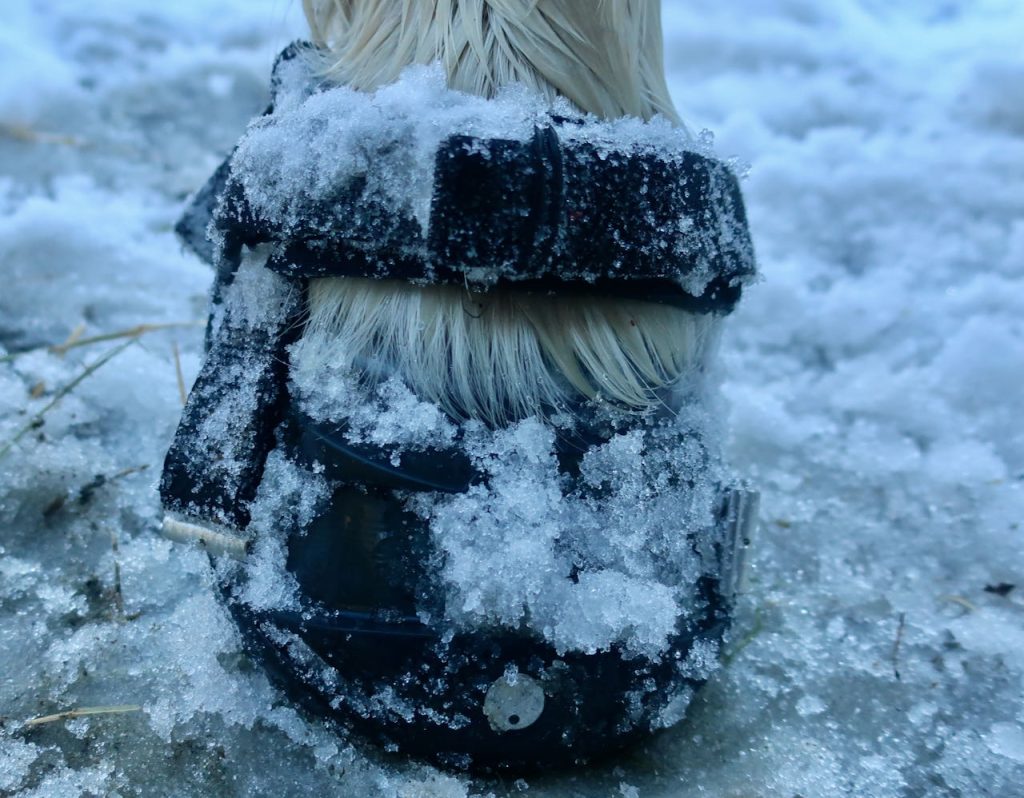
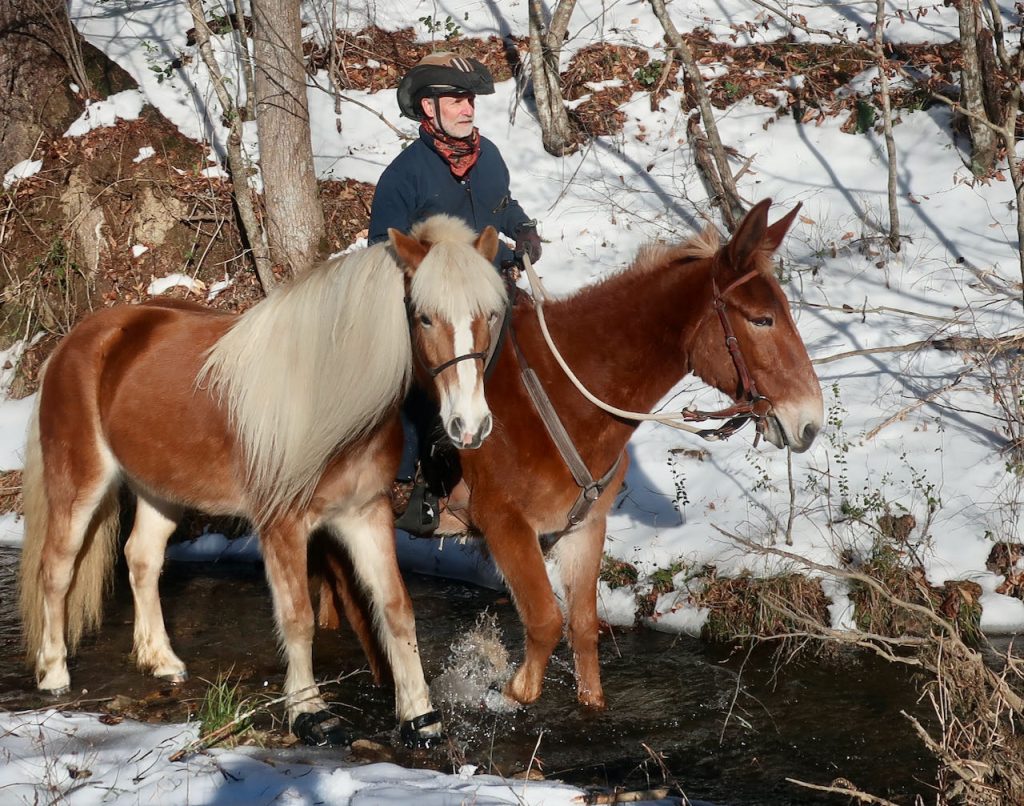
Hoof Boot Snow Travel Verdict
I’ve had good luck with hoof boots in the snow. For the most part, they’ve stayed on great. If I was doing any serious long-distance riding in the snow, and by that, I mean hundreds of miles in deep snow, I might consider shoeing my animals with steel shoes. The only reason I’d do that is because, at low temperatures in snowy conditions, hoof boots can be hard to fit and adjust.
Aside from those conditions, I’m fine using hoof boots in the snow.
More on Hoof Boots
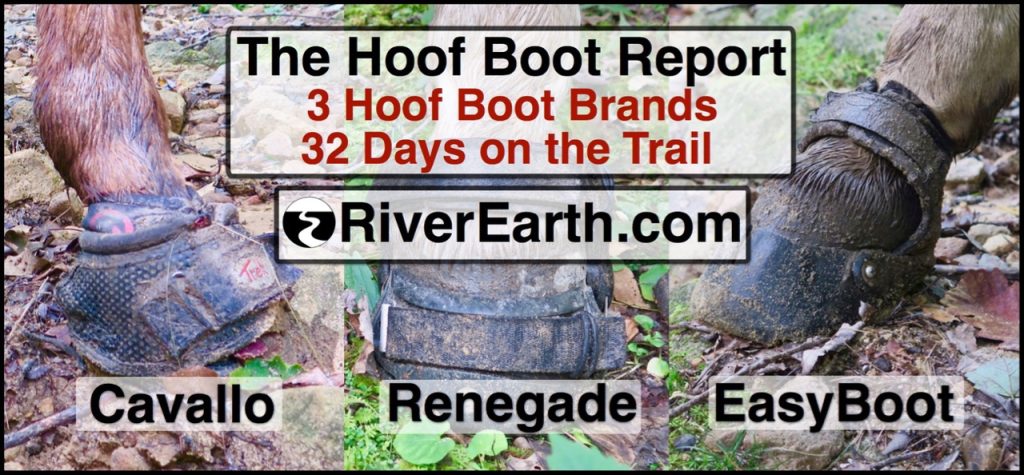
For more on the hoof boots Julia and I use, check out this review about three brands of boots Julia and I used on a mule ramble from North Carolina to Virginia and back. We clobbered the hell out of them and you can see how they performed. Click here to read.
Get a Heads up When then “Trash to Triumph” Book Comes out
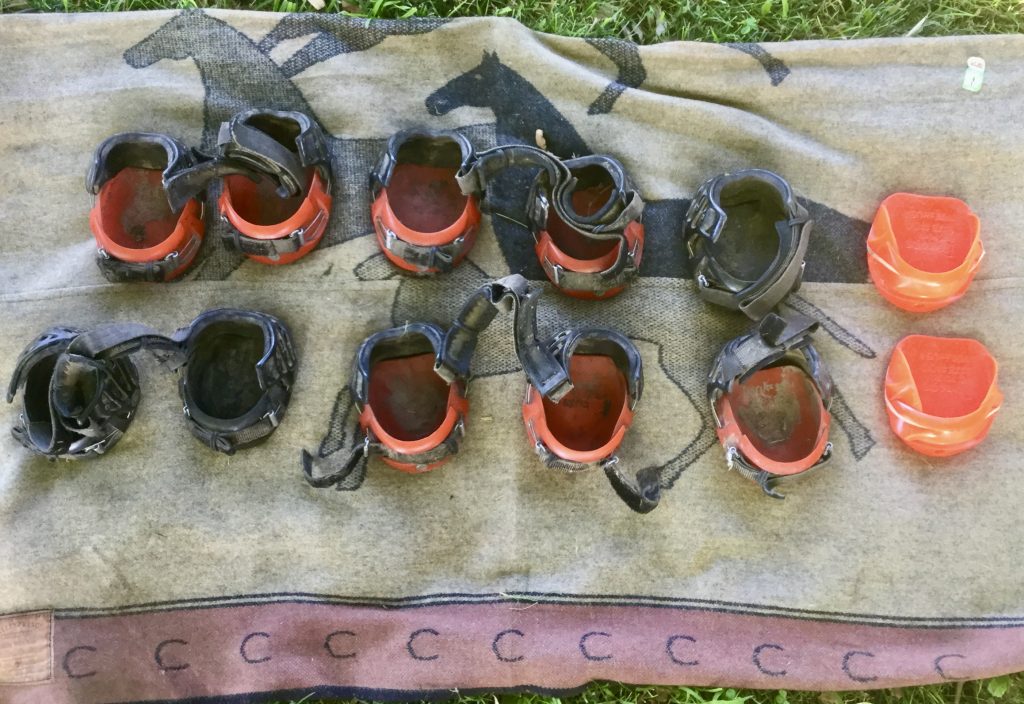
If you haven’t already, I’d be happy to give you a heads up when my book “Trash to Triumph” comes out. In addition to being about life on the road with two mules, the book goes into how I dealt with hoof boots under a wide range of conditions from mud and snow to rocks and pavement. Just sign up here for the RiverEarth.com newsletter and I’ll holler at you when the book is published.


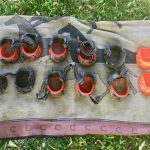
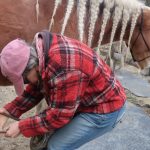
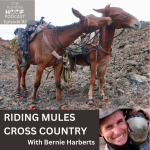



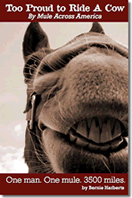
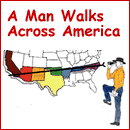

This makes me so glad I live in the desert…lol
These hoof boot reports are great, thanks so much for sharing them. I recently tried putting mule Walter’s old Easy Boots from 2013 back on and discovered, after 8 years barefoot, the boots are too small now!
Hi Katie, Great, as always, to hear from you checking in from the desert! I’ve sure enjoyed these boots posts and plan to do more. You mention the shape of Walter’s feet changing. It really is interesting how they change going from shod to barefoot. I’ve done a photo series on transitioning Julia’s pony Pie from steel shoes to boots over a span of 1 1/2 years. It’s amazing how much better her feet look. Now I just gotta write it all up! I hope all’s well with you out Arizona-way. Big howdy from the holler. Bernie
I am get a 4 Mt old jenny, she will be cart trained, what kind of boots can she wear for the road? Thank you Judy
Great hearing from you Judy. The best boots for your jenny are the ones that fit her best. I’ve had good luck with Easy Boots and Renegades on my mules. My mule Polly wore Renegade boots for her 2,400-mile wagon journey from Canada to Mexico (That was the “Lost Sea Expedition” which you can stream here on Amazon). I found they worked best because I could adjust them more than any other hoof boot I’ve messed with. Enjoy your jenny! Bernie
Loved this article, thanks for sharing this information, very valuable to those of us who live and ride our long ears. Love my mule!
Hi Rebecca, I’m so happy to hear you found this helpfull! Enjoy your long ears. Bernie
Great article really enjoyed So,I ride a Molly barefoot 100% but have thought about boots when I ride for a week at a time everyday. Do you have a brand recommendation that may work for me as I do strictly do trail riding with moderate rocky terrain and moderate mud.
Hi William, I’m so happy you enjoyed the article. Comments like that keep me writing them. First, congrats on going the barefoot path with your Molly. I don’t know what her feet look like (shape, heel height, etc) but I’ll bet you can make hoof boots work. I’ve found the main thing is to adjust them correctly. As I wrote to Sherry (comment below) my wife and I have successfully used four different brands of hoof boots on our mules – Renegades, Easy Boots, Cavallos and Scoots. I prefer the Renegades. (No, they don’t sponsor me). They have the widest range of adjustments for my mules’ feet. The biggest thing is to just set them up right (I need to write an article on that….).
All the best with your getting your molly fitted with boots. Let me know how it goes! Bernie
Love your stories on Hoof Boot’s in the snow. What brand of hoof boots do you use. Needing for my riding donkey.
Great hearing from you Sherry, We use four different brands of hoof boots on our mules and horses. They are: Renegades, Easy Boots, Cavallos and Scoots. I prefer the Renegades on my mules because they have the widest range of adjustment. A mule (and donkey’s) hoof is often narrower than a horse’s. It’s more “U”-shaped than “C”-shaped. My mule Cracker has really narrow hooves and a tall heel. Still, I can adjust the Renegades to fit them (he walked 2,200 miles from NC to ID in them). All the best with booting your donkey. Keep me posted how it goes! Bernie
Thanks for the info on boot brands
You’re very welcome, Terry!